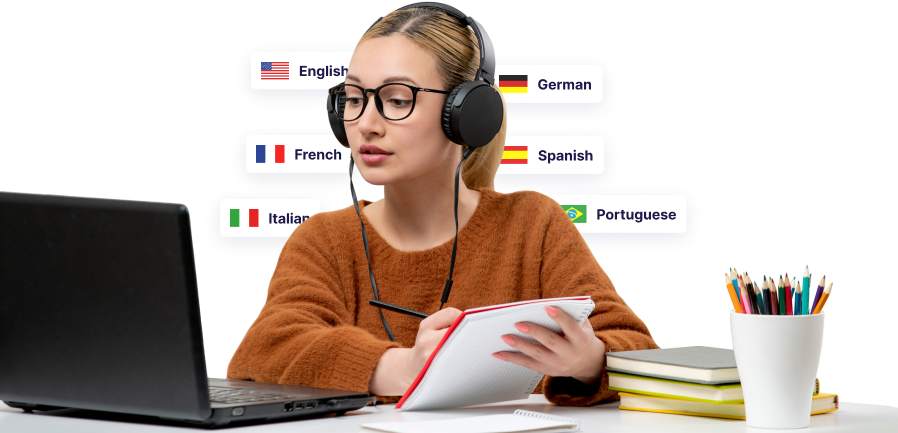Rapid Translate Team
Many times, people wonder about the cost of translation services. Therefore, questions arise regarding the factors that influence the cost. Likewise, people are curious whether translations are more expensive in specific locations than others.Having sufficient knowledge of the current translation rate will enable you to plan your budget. Therefore, you’ll begin negotiating knowing what to expect. Thus, you’ll be able to get translations for reasonable rates.

Table of Contents
The Cost of Professional Translation Services
Translations expand over various fields, leading to industry categorization. There are academic diploma translations that deal with educational information. We also have medical, legal, corporate, and immigration translations.
The uniting factor within these translation categories is that they are official and serve administrative purposes. Therefore, experienced translation professionals in the respective industries must handle these documents to achieve the best result.
Standard translators can put effort into the translation process to produce an excellent job, but the quality won’t be perfect. The result may fail to meet translation criteria for some organizations. Due to this, your chances of acceptance and success will drop.
The best option is to hire a professional translation company or official who understands industry terminologies and concepts. You may wonder about the cost of professional translation services. Usually, getting accurate, high-quality translations costs a lot.
Why? Because these companies need funds to finance their activities. Also, translators factor their skill, expertise, experience, and effort into pricing. Beyond providing excellent renditions, professional translation services offer quality assurance and retainer deals.
So, you should be ready to pay good money for value. Your budget should reflect your desires. However, the cost of hiring a professional translator varies since there are many services. Agencies charge between $0.09 and $0.35 per word. Note that the price may change depending on your customization needs.
Also, the industry’s level of technicality affects pricing. For example, legal documents and patent translations require higher expertise and attention to detail, which increases their cost. But regardless, you’ll always have options to choose from.

6 Factors Affecting the Average Cost of Translation Services
The translation industry enjoys high patronage, so many people want to understand its pricing and cash flow. If you’re going to hire a translator or become one, use this information to help organize your budget. So, let’s examine six factors that influence the average cost of translation services.
1. Location
The average cost of translation varies by location. In countries with a higher standard of living, professionals require more funds for resources needed to handle translation projects.
Therefore, this leads to higher translation costs in some countries or regions. Norway, Luxembourg, and Sweden are examples of such countries where high wages influence the cost of translation.
2. Language Pair
Some languages, like Mandarin and Cantonese, are notably difficult. Cantonese has six to nine tones with a wide range of rare vowels and consonants. Therefore, it’s tough for non-natives to attain fluency to the point of offering translations.
The cost of translation in languages like these is naturally higher. The price rises if the target and source language are challenging and mutually intelligible. But the cost is less for more common languages like French and Spanish.
3. Volume
The standard mode of pricing translation is on a per-word basis. However, there’s another method that involves pricing per page. Interestingly, both methods have one thing in common: voluminous tasks cost more.
So, a 20-page document will cost more than a 10-page one. Likewise, a source document of 1000 words will cost less than one with 2000 words.
4. Certification or Notarization
Some institutions and organizations require applicants to submit certified translations to prevent foul play. The certification statement attests to the translation’s accuracy and contains the translator’s details.
However, sometimes, agencies and international organizations request notarized copies of certificates and documents. Notarization legalizes translations and proves their validity. So, if you require additional services, be ready to pay more.
5. Urgency
Though the average translation cost may be within your budget, delivery time can hike the price. Hence, rush translations cost about 25% more since the professional must work longer hours to meet your demands.
This increment isn’t exclusive to standard translations. It also applies to certified translation and rush notary jobs. So it’s best to contact your translator about a week in advance.
6. Document Content
People categorize documents by their content. For example, memoranda, office circulars, and contracts are corporate translations. Some disciplines are more extensive and technical and require a complex understanding of concepts and terminologies.
Also, considering syntax and grammatical nuances, translating such documents requires a high degree of specialization. So, specialists who handle tactical translation charge more than regular translators.

The Cost of Translation Services per Hour, Word and Page
Pricing techniques represent translation service providers’ strategies when attaching costs to their services. On professional platforms like Upwork, you can connect with freelance translators whose hourly rates range from $15 to $40.
The cost of translation services per hour depends on the professional you negotiate with. Some translators also calculate the cost and charge per word. Thus, each word attracts a static price, and the total will be the number of words multiplied by the amount.
Not to worry, though. Translators’ reputations are on the line, so they won’t inflate the word count to get extra bucks. Another prevalent costing method involves assigning a static fee for each page. By this standard, the volume of your document determines how much you’ll pay.
While various translators and agencies offer different price ranges, you can budget between $15 and $29 per page. That’s a fair price for a standard translation. However, depending on the language pairs, it may be more or less. Some translation pair markets have many translators, while the translators are sparse in others.
While an English-to-Spanish translation may cost less, a Cantonese document translation will be more expensive. Therefore, you have to consider the language combination when preparing your budget.

Are There Free Translation Services?
It’s possible not to spend a penny on translation if you don’t wish to. You can use a machine language translation tool like Google Translate. Besides these, there are many other web translation services you can use. Since these are free, you may wonder why most people don’t use them.
Since it isn’t a human translation, their renditions aren’t perfect and are much lower quality. Using these, you risk numerous errors and inaccuracies that depict unprofessionalism and could lead to unnecessary delays in your scheme.
Other times, using these free translation tools results in outright rejection. So, in saving money, you may lose a once-in-a-lifetime opportunity. So rather than risk this, you should use a cheap translation service.
Cheap Translation Services
As unbelievable as it may seem, some affordable translation services offer high-quality translations. To understand this, you should know that there are different levels of translation. Below are three levels of document translation:
- The post-edited machine translation (PEMT).
- The four-eyed translation.
- Translation, editing, and proofreading.
PEMT entails a translator reviewing a machine translation to check for errors manually. It’s cheaper but not perfect, as mistakes can still occur. As for the four-eyed translation, after a translator gives a document rendition, their colleague reviews it. This style is better than a PEMT but not the best.
The highest level of translation, which is the last option, involves qualified translators rendering a document after scrutiny. After translation, the translator reads through the document to ensure accuracy. The translator then passes it to a professional editor with advanced literary skills in the source and target languages.
Finally, a third official will proofread the document for correctness. So, depending on your income and budget, you can pick the appropriate translation level. But remember also to consider the purpose of your translation and the institution you’ll submit it to.
Note that opting for the best translation level doesn’t always mean the cost of translation services must be outrageous. Though few, some foreign language translation agencies offer excellent services at affordable rates. There’s no need to go through several such options as we’re the best among them all.
RapidTranslate offers exceptional translators who are native speakers of over 60 languages. Our translators pay attention to detail and will do their best to ensure your satisfaction. We offer translation, edition, proofreading services, and also quality control.
We can help you break communicative boundaries and excel in all fields. So contact us for your international, academic, business, and legal translations.





